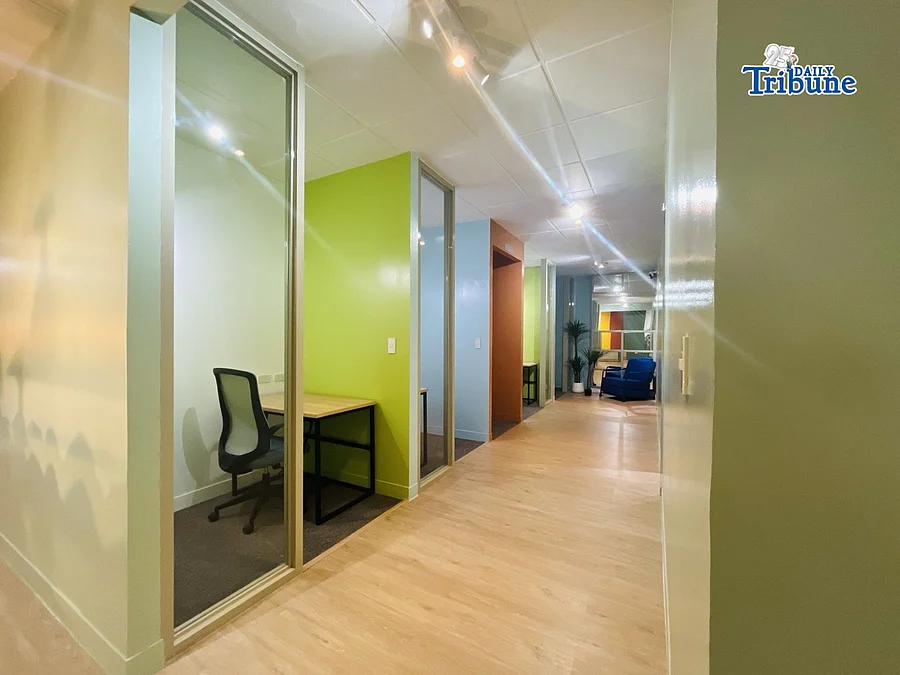By Andleeb Abbas
Copyright brecorder

Weird. Weary. Aloof. Alienated. Disen gaged. Dist urbed. Disenchanted. These are some polite descriptions of the new generation of entrants in the workplace. They are an enigma, a mystery, a puzzle unsolved.
The social media is full of reels and memes on their behaviour. Chat groups and seminars have fatigued themselves on debating and discussing about them. They remain a phenomenon un-understood. That has led to issues both at home and at the office.
Parents are constantly complaining about their inability to connect with them, guide them and steer them in the right direction.
Seniors in workplaces are just unable to relate to them and engage them. This has created a gap that is growing, dangerous and can lead to relationship breakdown. There is a lot of information available on them that needs to be sifted, arranged and analyzed with a different lens to make sense of the “Zee” factor.
They say you can spot a Gen Z worker from a mile. Entering an office, in early times, meant a formal professional aura. Seniors in their corner offices and juniors in the hall, sitting and doing their work. In present era, as you enter the office you see somebody slouching over their desk with one leg under the other on the chair.
As you used to walk along the hall, you normally got some nods of the head as acknowledgement and greeting from the workers. Instead, there is this young girl or boy sitting and chatting without acknowledging your presence. You start an early morning meeting and you see a person sitting and giving the famous Gen Z stares. You walk into an early morning briefing seminar on safety and you see young people in tracksuit pajamas.
These are behaviours most professionals are not used to.
This peeves many people. They avoid such aloof people. They feel it exhibits insolence and unprofessionalism. They stop engaging with them. They wait for the Gen Z to underperform. When they do, they slay them publicly and privately. End of the story is this “generation is not willing and not skilling”. While this may be true with some cases, it is not true for the whole generation. Judgments are made on what “appears to be”. What lies beneath is not probed. Some myths about Gen Zee are:
Myth #1— Gen Zee rebels against the office work- The major complaint that companies have is that this generation does not like to come to the office. They are a COVID home-bound lot. They prefer the screen to a face-to-face connect.
While it is true that Gen Zee have spent the most impressionable time of their life in Covid isolation, it is not true that they want to just work from home. A Seramount study found that only 11% of Gen Z want to work completely from home, compared with 34% of older workers.
In reality, around 74 percent of Gen Z employees like a mix of home and office work. They want to have flexibility but want to connect with their peers and seniors in a more enriching way.
Myth#2— Gen Zee “stare” shows disrespect and disdain-That “look” of this generation has become a talk of the workplaces. Their unblinking look unnerves many people.
The gaze or stare of these youngsters in offices is viewed as their disinterest bordering on defiance. This in fact is more of an emotional protection where they are hesitant to just appear smiling and ready for anything. Yes, they are a generation more comfortable with emoticons than with real emotions, but are also hungry for being understood and appreciated. The stare is a safety wall against being taken for granted.
Myth#3— Gen Zee indulges in “conscious un-bossing”- Another popular perception about his generation is that they refuse to accept being led or managed. They think they know it all and thus are not responding to their line managers or seniors. That is also a bit harsh. They do respect leaders, but not just because they have to. They find traditional management hierarchies cumbersome and want more inclusive and expertise based leadership styles.
If the myths are misleading, what are the ways to lead this generation. They already account for 27% of the workforce and will be the majority in 2035. That is why it is important to learn what makes them tick. It is equally important to learn what makes them ick. This word “ick” is a disgust that this generation feels for anything that they are disappointed with. Let us look at some leadership lessons that we need to learn and apply to unravel and unleash the undiscovered talent of this enigmatic generation:
Be authentic, be flexible— The Generation Zee ick is the old way of being asked to follow the one whom you report to. They may or may not. They are from a more independent upbringing. They are sick of fake images in social media. They want leaders who are true and genuine. They want more flexibility and inclusivity in work decisions. To lead them, leaders cannot just spin. They cannot just give feedback to them. They have to be ready to take feedback. They have to be practicing what they preach.
Be meaningful, be inspirational— Another ick this generation dislikes is to be doing meaningless work. Leaders have to give them the vision. They have to go beyond job descriptions. They must engage them on both a personal and professional level by knowing and caring about their aspirations and dreams.
Be socially responsible— This generation is very sarcastic about the hypocrisy of companies who talk big and are just numbers obsessed. Connect them to a higher cause. They love working for leaders who are sensitive to societal issues. Involve them to contribute in them.
Neither are Generation Zee aliens nor are leaders necessarily insensitive. What is needed is for leaders to bend and reach their level to connect to them. This generation needs to be drawn out and drawn into connecting more. Recently, I hired a typical Generation Zee associate in my office. His behaviour for the first two weeks gave the same signals i.e., aloof, staring, disconnected and disenchanted. I then had a long one to one with him.
It was a discovery. I made changes in dealing with him and briefed the other team members on how to include, engage and connect to him.
He transformed. His lethargy changed to enthusiasm, he took on all sorts of responsibilities, he became the most productive member of the team. At the end, what counts is to understand that every heart has its own beat. To understand the heartbeat of this generation engage in a heart to heart, excite them with a cause and purpose, and then see the ordinaries become extra-ordinaries.
Copyright Business Recorder, 2025



